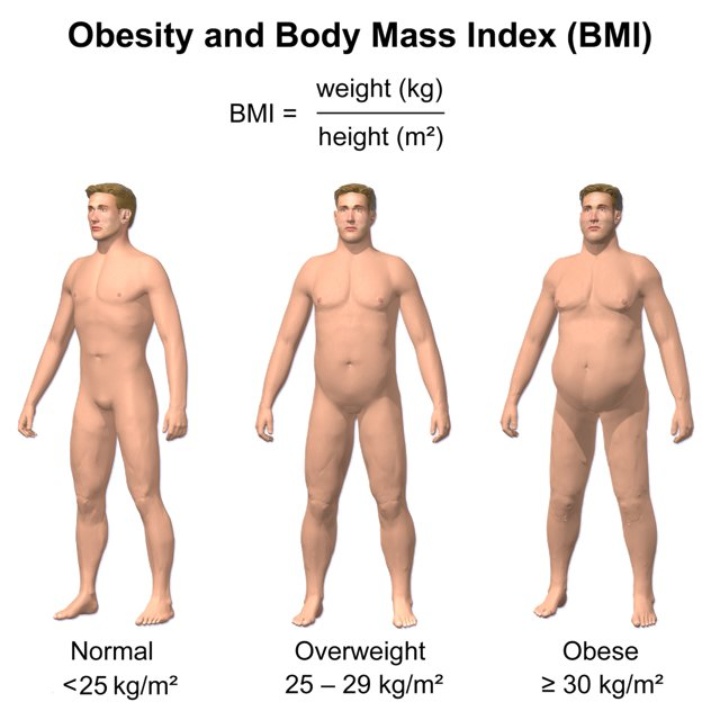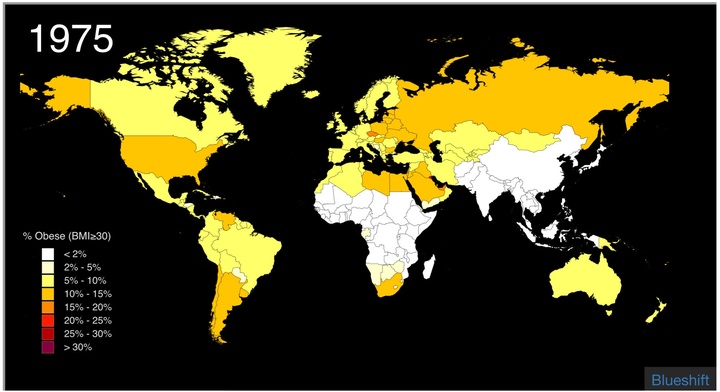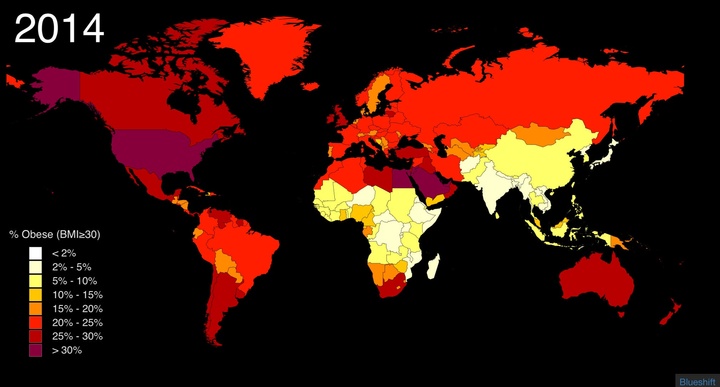“If the free
interplay of market forces has produced an outcome where 15 percent
of humanity are hungry while 20 percent are overweight, something has
gone wrong somewhere.”
— International Federation of Red Cross and Red Crescent Societies (IFRC) secretary general Bekele Geleta

BruceBlaus, Creative Commons license.
You know, of course, that obesity rates have been climbing steeply. Here in the U.S., it’s jumped from 12.1% to 34.2% of adults in the 40 years 1975-2014. This near-tripling is mirrored globally: three times as many adults, 600 million (13%), are now obese compared to 1975. Not to mention 42 million kids under the age of five.

Obesity rates by country, 1975 (Max Galka, Blueshift, https://blueshift.io/)

Obesity rates by country, 2014 (Max Galka, Blueshift, https://blueshift.io/)
These two world maps tell the story better than I can in words. They’re from a graphical year-by-year series created by visualization expert Max Galka, who used data from nearly 20 million participants in 186 countries. It’s well worth a minute of your time to watch the unfolding of the obesity crisis.
Obesity is defined
(in most countries) as having a Body Mass Index of over 30
kilogram/meters squared. For us benighted non-metric users, that’s
703 times your weight in pounds divided by your height the square of your height in inches.
Here’s a BMI calculator.
Of course, with such a quick-and-dirty definition, there will be
plenty of outliers — a fit, musclebound jock may well exceed the magic
30, but for most of us, it’s a quick way of evaluating our overall
weight-health.
And that’s the problem, health — which led to the American Medical Association to classify obesity as a disease four years ago. Obese people, on average, are more prone to type 2 diabetes, heart disease, apnea and osteoarthritis than the rest of the population. In addition, many of the hundred-odd cancers found in humans are exacerbated by obesity — 10% of cancer diagnoses are put down to non-smoking lifestyle choices such as overeating, poor diet, lack of exercise and heavy alcohol consumption. (Smoking accounts for about 22% of all cancers.)
Unless you’re in the pay of Coca Cola®, you won’t have any difficulty in appreciating that much of the world’s obesity problem stems from the availability of cheap, empty-calorie sodas; in the U.S., young adults get about a quarter of food energy from sweetened beverages. (If you are in their pay, please read this!) One problem with sugar-laden colas is that liquids don’t satisfy in the way solid food does, so drinking a liter of Coke is going to leave you hungry. Fatter, but still hungry. Another issue is that in some parts of the world, sugared sodas are cheaper than bottled water, so people—especially kids—are easy marks for the multi-nationals. Sugar, it turns out, is about as addictive as tobacco), so catch ‘em young and you’ve got them for life. Even though it’s a bit dated, I recommend the documentary “Globesity: Fat’s New Frontier.”
Here’s the weird thing. Just a generation or so ago, the food problem was one of under-nourishment. (Historically, many, many more people have died of starvation than of all the wars, plagues and accidents combined.) But that’s recently turned upside down. Now, perhaps 15% of us are hungry, while 20% of the population is overweight, where “overweight” starts at a BMI of 25. We’re getting hunger beat, only to replace it with its opposite.
All this writing about food sure gives a guy an appetite. Wonder if Dennys is still doing that four-item breakfast special?
CLICK TO MANAGE